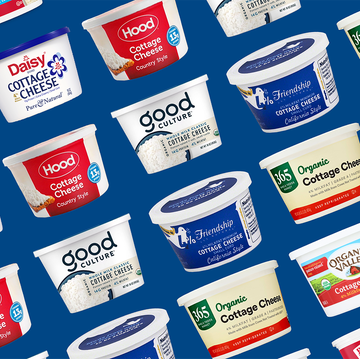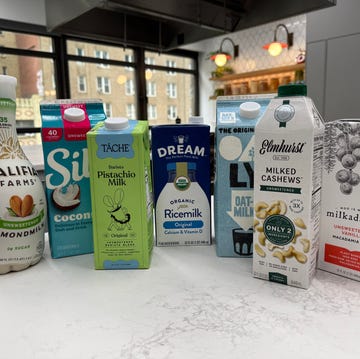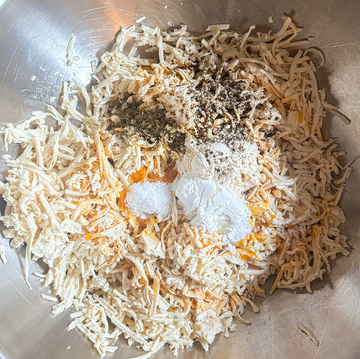1Strawberries
 Getty Images
Getty ImagesThis is the third year in a row that strawberries have been named the top carrier of pesticides in produce. In 2017, EWG found that 99 percent of the strawberries tested contained detectable pesticide residues. According to the most recent report, as many as 22 pesticide residues were found in one strawberry sample, while a third of all conventional strawberry samples contained at least ten pesticides.
2Spinach
 Getty Images
Getty ImagesJust when you thought you'd finally found a few ways to cook the leafy green that don't suck, EWG comes along with yet another reason to be wary of spinach. According to the group's findings, 97 percent of conventional spinach samples contained pesticide residues and had relatively high concentrations of the insecticide, permethrin.
Advertisement - Continue Reading Below
3Nectarines
 Getty Images
Getty ImagesIn 2017, 98 percent of nectarines tested positive for multiple pesticide residues. The fruit has held its place in the third spot on this year's list, though EWG's findings state that the amount of nectarines containing pesticides has decreased by four percent since last year.
4Apples
 Getty Images
Getty ImagesPesticides were detected on 90 percent of conventional apples tested while 80 percent tested positive for diphenylamine, a pesticide banned in Europe.
Advertisement - Continue Reading Below
5Grapes
 Bronze Photography
Bronze PhotographyAccording to EWG's findings, grapes rank higher on this year's list than they did last year. In the report from 2017, grapes came in at #7 on the list, though this year a higher amount — more than 96 percent — of conventional grapes tested positive for pesticide residues.
6Peaches
 Getty Images
Getty ImagesPeaches rank a little lower on the list than their stone fruit cousins, nectarines, but that's not to say that you should underestimate the amount of chemicals found on them. The report shows that four different pesticide residues were detected on almost 100 percent of conventional peaches.
Advertisement - Continue Reading Below
7Cherries
 Getty Images
Getty ImagesCherries have retained their place at #7 on this year's roundup. An average of five pesticides were detected on conventional cherries tested, and 30 percent of the samples tested positive for iprodione, a pesticide that has been banned in Europe.
8Pears
 Getty Images
Getty ImagesPears managed to drop down a few spots on this year's list, but not by that much. Coming in at #8, over half of the conventionally grown pears tested had the residues of five or more pesticides. EWG also found traces of insecticide and fungicide.
Advertisement - Continue Reading Below
9Tomatoes
 Getty Images
Getty ImagesTomatoes remain in the top 10 in this year's ranking, even managing to hop up one spot from last year. According to EWG, one sample of conventional tomatoes contained 15 different pesticides.
10Celery
 Nina Shannon/Istock
Nina Shannon/IstockMore than 95 percent of celery samples tested by federal officials contained pesticides.
Advertisement - Continue Reading Below
11Potatoes
 Getty Images
Getty ImagesPesticides are regularly found on potatoes during testing. The good news for you is that, if you'd rather steer clear of the vegetable because it occupies a spot on the Dirty Dozen list, you can always opt for sweet potatoes, which fall at #31 on the list overall.
12Sweet Bell Peppers
 Getty Images
Getty ImagesSweet bell peppers consistently find themselves listed on the Dirty Dozen list, though this time they've managed to come in right at the bottom. Their placement shouldn't be taken likely though, since the pesticides found on bell peppers are more toxic than those found on other contenders on the list.
Follow Delish on Instagram.
Advertisement - Continue Reading Below
Advertisement - Continue Reading Below
Advertisement - Continue Reading Below

























